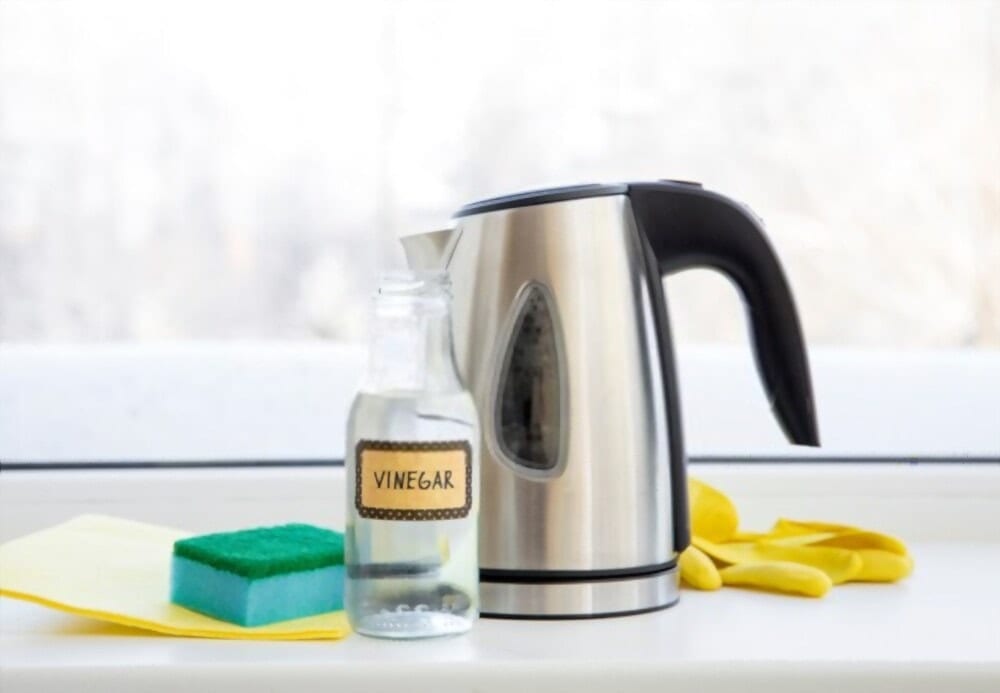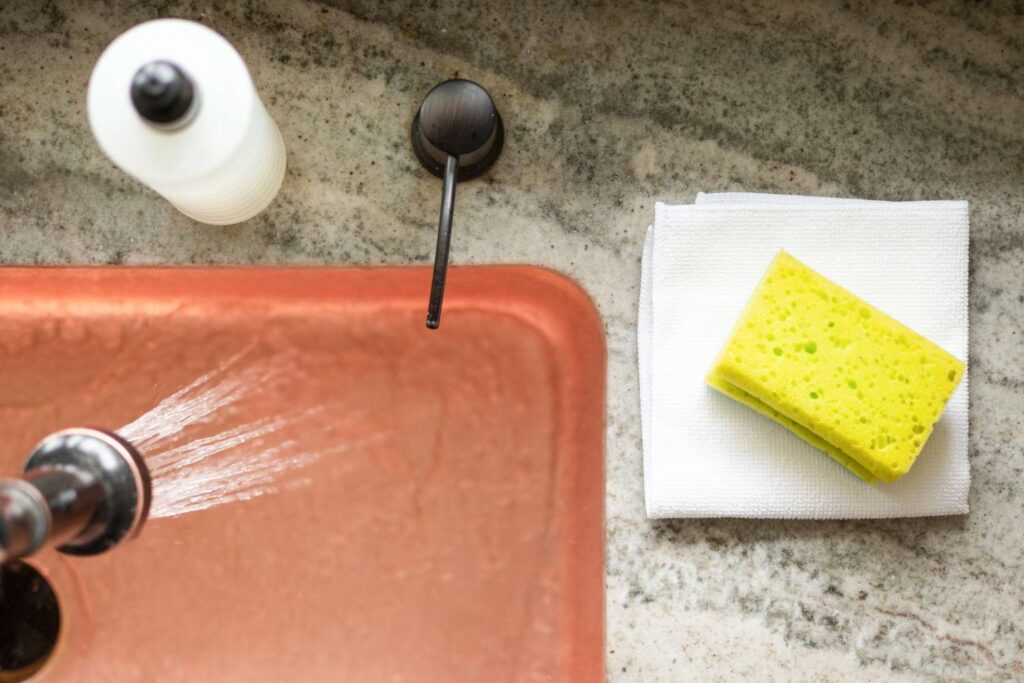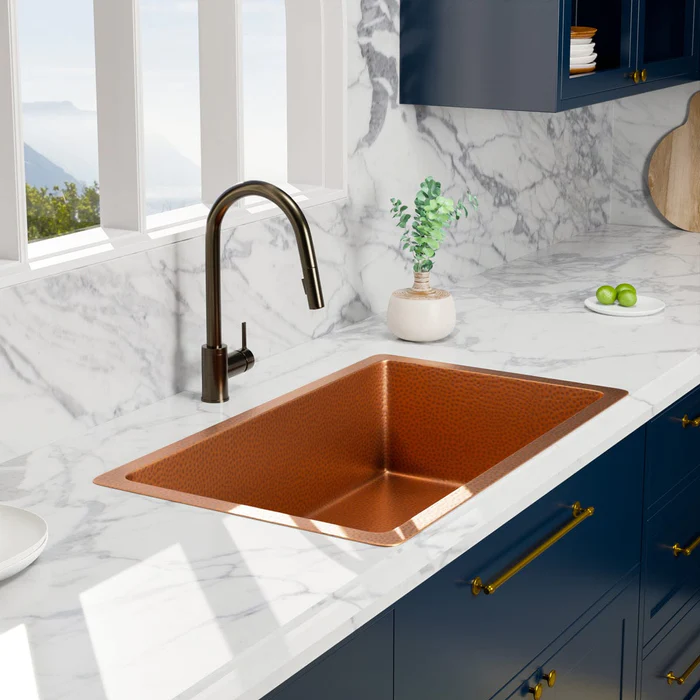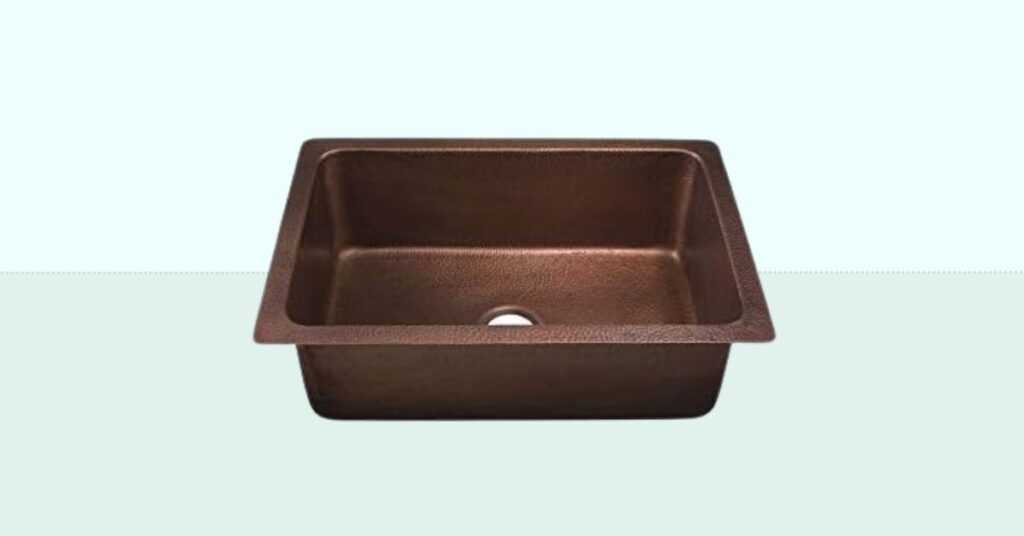Copper sinks are prized for their unique, rich color and beauty. However, copper requires regular cleaning and maintenance to uphold this bright, eye-catching look. A clean copper sink not only looks nicer, but is more sanitary and helps prevent the buildup of stains, water spots, and tarnishing.
With proper routine care and cleaning, a copper sink can maintain its original shine and luster for many years. This guide will walk through the key steps for keeping your copper sink looking vibrant.
Copper as a Material

Copper is a unique material with several beneficial properties that make it well-suited for sink basins. Here’s an overview of copper’s qualities and why it requires special care:
- Copper is a malleable metal that can be hammered and molded into smooth, seamless shapes. This allows copper sinks to be crafted into flowing, one-piece designs without seams or crevices where grime can collect.
- Copper has good durability and hardness while still being somewhat flexible when thinly rolled. This combination of strength and flexibility allows copper sink basins to stand up to years of regular use without bending, warping, or denting.
- Copper has antimicrobial properties that inhibit the growth of bacteria, mold, and mildew. Copper surfaces like sinks are inhospitable environments for microbes.
- While prone to tarnishing, copper is rust resistant, allowing copper sinks to maintain their shiny warm finish longer than many other metals, especially when properly cared for.
How Copper Sinks are Made
Copper sinks are usually shaped by artisan craftsmen through a process of hammering and hand-polishing sheets of copper into seamless basins. Some mass-produced copper sinks are instead made by stamping copper sheets into mold shapes. The uniqueness of handmade copper sinks results in one-of-a-kind designs.
Special Care for Copper
Though durable, copper requires some special care:
- Copper will gradually oxidize and tarnish from air exposure over time. This patina and aging needs to be polished away through regular cleaning.
- Copper is softer than materials like stainless steel. Its surface can be more prone to scratching and scuffing, especially from abrasive cleaners or scouring pads. Gentler care is required.
- Copper can react with certain materials like ammonia, bleach, and acids. Only appropriate cleaners should be used to avoid damaging the sink surface.
With the proper gentle cleaning and polishing, a copper sink can maintain its warm finish and last for decades while adding uniqueness and antique style to a kitchen.
Common Issues with Copper Sinks

Copper sinks are prone to a few common issues that require regular cleaning and maintenance.
Related: Unpacking the Pros and Cons of Copper Sinks
Tarnishing and Patina Buildup
Copper naturally reacts with air and water to form a patina layer. This oxidized layer causes the copper to darken or tarnish over time. The patina buildup can range from a slight dulling to very dark spots and streaks. Frequent cleaning is required to remove tarnish and prevent heavy patina layers.
Hard Water Stains
Minerals in hard water can leave behind white, chalky mineral deposits on a copper sink. These mineral stains build up over time and can be difficult to remove if left untouched. It’s important to promptly clean and wipe away any water spots before they have a chance to dry and harden on the surface fully.
Stubborn Dirt and Stains
Copper is prone to staining from many household products and foods. Spaghetti sauce, wine, coffee, and other acidic products can etch the sink’s surface. Grease and dirt buildup also adhere readily to copper. These stubborn stains require thorough scrubbing and the use of copper-safe cleaners to lift and dissolve the messes.
Cleaning Materials Needed

Cleaning a copper sink properly requires having the right supplies on hand. Here are the most common ingredients and tools needed:
- Baking Soda – An abrasive yet gentle cleaner, baking soda helps scrub away oxidation and restore shine to copper. It neutralizes acids and helps remove stains.
- Vinegar – The acetic acid in vinegar dissolves alkaline deposits like mineral buildup. White distilled vinegar works best. Combine with baking soda for enhanced cleaning power.
- Dish Soap – A mild detergent helps lift away grease and grime. Look for a formula without harsh chemicals. Dish soap aids the cleaning reaction when combined with vinegar and baking soda.
- Soft Cloths – Old rags, microfiber cloths, or soft sponges are ideal for scrubbing copper without scratching the surface. Have a few clean clothes on hand.
- Toothbrush – For tackling stubborn stains in crevices or etched designs, an old toothbrush comes in handy. The soft bristles won’t damage the copper.
Avoid abrasive scouring pads or powders that could scratch the copper. With these simple natural ingredients and tools, you can safely clean copper sinks and achieve a brilliant shine. Test any cleaners in an inconspicuous spot before using them on the entire sink.
Related: How to Remove Chemical Stains From Stainless Steel Sink – The Fastest Way
Preparing the Sink for Cleaning

Before starting the cleaning process, it’s important to prepare the copper sink properly. This will help loosen up any dirt and grime, making cleaning easier.
Step1:
Remove any accessories, debris, or removable parts from the sink such as strainers, stoppers, etc. Removing these items will allow you to access the entire sink surface area.
Step2:
Plug the drain and fill the sink with warm water. The warm water will help dissolve grease and oils that may have built up on the surface of the copper. Let the sink sit for 10-15 minutes filled with the warm water. This allows time for the water to penetrate and loosen any stuck-on grime or mineral deposits. Sitting in the warm water softens baked-on gunk, making scrubbing easier later on.
Step3:
After letting it sit, drain the sink completely. The surface should now be prepped and ready for cleaning. The grime will be loosened up, and the copper surface will be softened and ready to be scrubbed clean.
Stubborn Stain Removal
Copper sinks can develop stubborn stains over time that require a bit more elbow grease to remove. Avoid using harsh chemical cleaners, as these can damage the copper surface. Instead, try a non-abrasive cleanser designed for use on metals.
Make a paste with the cleanser and water, and apply it directly to the stained area using an old toothbrush or soft cloth. Gently scrub in circular motions, taking care not to scratch the copper. Let it sit for 5-10 minutes before rinsing thoroughly.
For really tough stains, repeat this process as needed. It may take several treatments to fully remove some long-set stains. But with some persistence and gentle scrubbing, you can restore the copper sink to its original brilliance. Just remember to be patient and don’t use anything too abrasive on the soft copper surface.
Preventative Maintenance
To keep your copper sink looking its best, establish a regular cleaning routine. Wipe down the sink at least once a day and after heavy use, to prevent buildup. Each time you clean, use a soft sponge or cloth to avoid scratching the surface. Avoid abrasive cleaners or anything containing bleach, ammonia, or acids.
For daily maintenance, create a 50/50 solution of vinegar and water and use it to wipe down the sink after each use. The mild acidity of the vinegar will help prevent tarnish and buildup.
Every 1-2 weeks use a copper cleaner to thoroughly clean and shine the sink. Look for a cleaner that contains lemon oil or beeswax, which will add protection. Apply a thin, even layer and buff it in.
Sealing the copper with a food-safe sealer or wax will add further protection. Use a product specifically made for sealing copper. Apply a thin layer with a soft cloth and buff to a shine. Reapply every 3-6 months. The sealant prevents water spots and tarnishing.
With proper routine care and the use of mild cleaners, your beautiful copper sink will maintain its luster for years to come.
Related: Ultimate Guide on How to Measure Your Sink Drain Size
Additional Long-Term Care Tips

Copper sinks require some additional maintenance over time to keep them looking their best. Here are some tips for keeping your copper sink in good condition long-term:
Polishing for Shine
Over time, copper tends to lose its shine and take on a dull patina. To bring back the original glossy finish, use a copper polish specifically designed for copper sinks. Apply the polish with a soft cloth and rub in a circular motion. Rinse thoroughly afterward. Polishing once every couple of months will help retain the sink’s brilliance.
Dealing with Patina Buildup
Too much patina buildup can make a copper sink look grimy. For a thorough cleaning, use a paste of lemon juice and salt. Rub the paste all over the sink with a sponge or soft cloth. Let it sit for 5-10 minutes before rinsing. Repeat as needed for stubborn patina spots. This can restore the sink’s copper glow.
Re-sealing Over Time
The protective sealant on a copper sink wears off over time. To renew the sealant layer, thoroughly clean and dry the sink first. Then apply a thin, even layer of sealant with a soft cloth. Allow to dry completely before use. Re-sealing once a year helps prevent wear and preserves the sink’s finish.

